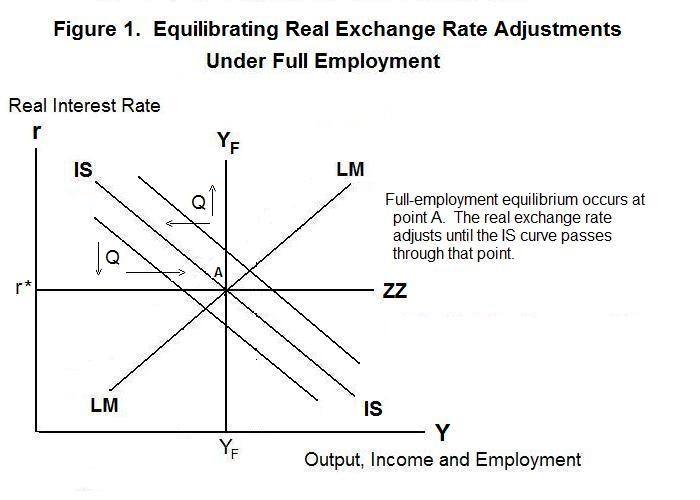How Interest Rates Are Determined
Post on: 16 Март, 2015 No Comment

What Interest Rates Measure:
The term interest rate could mean anything from the Federal Reserve’s Fed funds rate to any of the Treasury Note yields to the 30-year fixed-interest mortgage rate. Since these rates usually move together, the term interest rate usually means any bank lending rate.
How Interest Rates Are Determined:
Different types of interest rates are driven by different forces. Variable interest rates are just what the name says — they vary throughout the life of the loan. Until the housing boom in the early 2000s, they varied along with the Fed funds rate. That is the target interest rate directly controlled by the Federal Reserve. For more, see How Exactly Does the Fed Cut the Fed Funds Rate ?
As the housing boom accelerated, new types of variable interest rate loans were created. Some varied the rates according to a schedule. The first year was 1% or 2%, then the rate jumped in the second or third year. Many people planned to sell their home before the interest rate jumped, but some got caught when housing prices started to fall in 2006.
Even worse was the interest-only loan. Borrowers only paid the interest, and never reduced the principal. The worst was the negative amortization loan. The monthly payment was less than needed to pay off the interest. Instead, the principal on this loan actually increased each month.
Rates on longer-term loans, such as the 15-year and 30-year fixed interest mortgage rate. are fixed for the loan’s term, either 15 or 30 years. These interest rates don’t follow the Fed funds rate at all. Instead, they follow the yields on the 10- or 30-year Treasury Notes. These are auctioned by the U.S. Treasury Department to the highest bidder. The yields respond to market demand. If there is a great demand for these notes, then the yields can be low. If there is not much demand, then the yields need to be high to attract investors.
Other Types of Interest Rates:
- LIBOR. This is the rate banks charge each other for overnight loans to meet the Fed’s reserve requirements. It is an acronym for the London InterBank Offering Rate. It is usually just a few tenths of a point higher than the Fed funds rate.
- Prime Rate. What banks charge their best customers. It is usually above the Fed Funds rate, but a few points below the average variable interest rate.
- Credit Card Rate. This is usually the highest interest rate of all. That’s because credit cards require a lot of maintenance since they are part of the revolving credit category. These interest rates are typically several points higher than the LIBOR rate .
- Non-revolving Credit Rate: These are typically consumer loans for automobiles, education and large consumer purchases like furniture. These interest rates are higher than the prime rate. but lower than revolving credit. Since these loans are typically one, three, five or 10 years, they vary along with the yields on 1-year, 5-year, and 10-year Treasury notes .

Why Interest Rates Are Important:
Interest rates control the flow of money in the economy. High interest rates curb inflation. but also slow down the economy. Low interest rates stimulate the economy, but could lead to inflation. Therefore, you need to know not only whether rates are increasing or decreasing, but what other economic indicators are saying.
- If interest rates are increasing and the Consumer Price Index (CPI ) is decreasing, this means the economy is not overheating, which is good.
- But, if rates are increasing and GDP is decreasing, the economy is slowing too much, which could lead to recession .
- If rates are decreasing and GDP is increasing, the economy is speeding up, and that is good.
- But, if rates are decreasing and the CPI is increasing, the economy is headed towards inflation.
How Interest Rates Affect the U.S. Economy:
Interest rates affect the economy slowly. When the Federal Reserve changes the Fed funds rate. it can take 12-18 months for the effect of the change to percolate throughout the entire economy. As rates increase, banks slowly lend less, and businesses slowly put off expansion. Similarly, consumers slowly realize they aren’t as wealthy as they once were, and put off purchases.
However, stock market analysts and traders watch the monthly FOMC meetings like a hawk. A .25 point decrease in the rate immediately sends the market higher in jubilation because it knows that will stimulate the economy. On the other hand, a .25 increase in the rate can send the market down, as it anticipates slow growth. Analysts pore over every word uttered by anyone in the Fed to try and get a clue as to what the Fed will do.
Recent Interest Rate Trends:
The current Federal Reserve interest rate is between zero and .25%. It was lowered by 1/2 point on December 17, 2008, the 10th rate cut in a little over a year. The Fed began dramatically lowering rates on October 29, 2008 in response to the bank credit crisis. For more on the Fed’s actions, see Current Federal Reserve Interest Rates .
The 2008 recession was actually predicted by an inverted yield curve. This is when the Treasury Note long-term rates are lower than the short-term rates. Treasury yields hit a 200-year low of 1.442%. Since then, the yield on the 10-year Treasury has hovered around 2.6%.
How Interest Rates Affect You:
The most direct impact interest rates have is on your home mortgage. If interest rates are relatively high, your loan payments will be greater. If you are buying a home. this means you can afford a less expensive home. Even if you are not in the market, your home value will not rise and could even decline during times of high interest rates.
On the other hand, high interest rates curb inflation. This means the price of other goods like food and gasoline will stay low, and your paycheck will go further. If you were smart enough to lock in a fixed-interest loan at a low rate, your income will stretch even more.
If interest rates stay too high for too long, it causes a recession, which create layoffs as businesses slow. If you are in a cyclical industry. or a vulnerable position, you could get laid off. Article updated June 10, 2014














